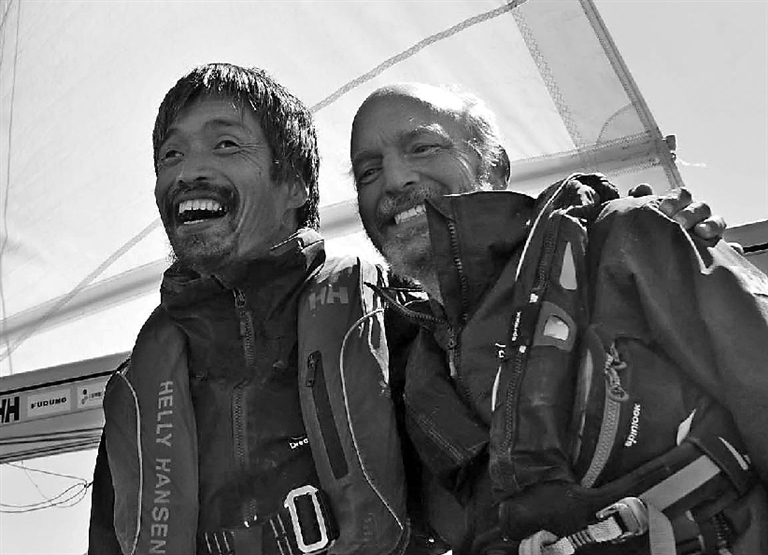
A JAPANESE sailor has completed a two-month, nonstop trek across the Pacific Ocean, becoming the first totally blind person to do so. Mitsuhiro Iwamoto, 52, left San Diego on Feb. 24, sailing 8,700 miles (14,000 kilometers) on his 40-foot (12.2-meter). boat, named “Dream Weaver,” to Japan with the help of a sighted navigator, American Doug Smith. This is a long overdue moment for Iwamoto, whose first attempt in 2013 ended when his 28-foot boat hit a 50-foot blue whale, sinking it in a matter of minutes. He needed to be rescued in a life raft by the Japanese military in near typhoon-like conditions. The Japanese media criticized their trip and the taxpayer-funded rescue. The posttraumatic stress of the ordeal almost caused him to give up on his dream he called the “Voyage of Inspiration.” According to the Japan Blind Sailing Association, he’s the first blind person to sail across the world’s largest ocean without stopping. When sailing, Iwamoto can still feel the wind direction and steer with sighted people’s help, but needs a guide like Smith to navigate around other boats, according to the Voice of San Diego. To work around his disability, he uses a vocalized GPS and audio compass. On the latest trip, Iwamoto steered the yacht and managed the sail, while Smith helped him with the equipment that shows wind direction. Iwamoto, who practices oriental medicine, moved to the U.S. from Japan in 2006. He was partially sighted when he was born, able to do things like riding a bike or playing baseball. When he was 13 he started losing his sight and three years later it was gone completely. That wasn’t easy for the teenager. “My teacher told me I had to start using a cane, but no, I didn’t want to accept that,” he said in 2010. “Life was hard. I was negative and I couldn’t accept my blindness. I didn’t know what my life is going to be. I tried to commit suicide even.” Iwamoto cried, but in his dreams he received a message to be positive, something he lives by today. “There isn’t just one life,” he said. “I must have meaning in life, being blind. To encourage people. Not just blind people, but sighted people who lost their meaning of life.” His second journey across the Pacific was the accumulation of everything he’s gone through. Determined to make it after his first attempt failed, he took part in triathlons to get used to the water and overcome the mental aspect of his last failed journey. He even decided to travel in the opposite direction compared to his first voyage. Iwamoto and Smith made the record-breaking trip to raise money for charity and prevent diseases that cause blindness. (SD-Agencies) | 
